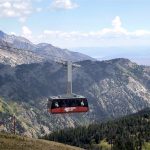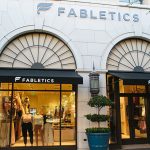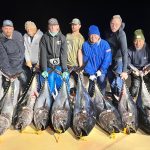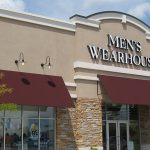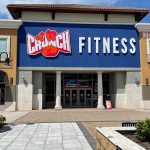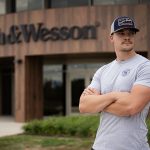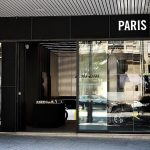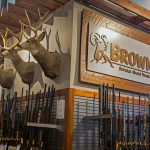Shock Doctor Inc. was acquired by Norwest Equity Partners, gaining a much-needed larger equity partner that will help the protective gear company expand into new areas particularly action sports as well as pursue acquisitions. NEP acquired an approximately 90% stake in Shock Doctor, according to Todd Solow, principal at NEP. The rest is owned by management, which will stay in place. Terms of the deal were not disclosed.
Hillcrest Capital Partners, which acquired a stake in Shock Doctor in 2003, was looking to cash in on its investment, but Shock Doctor was also looking for more funding. NEP has in excess of $3 billion in capital under management and is currently investing NEP VIII, an $800 million fund.
“The business is kind of at an inflection point and we were looking for financial resources to really grow,” said Steve Washburn, Shock Doctor's president and CEO, in an exclusive interview with Sports Executive Weekly. “We were also able to take some debt out of the business, but just having access to capital to grow the business more organically and through acquisitions was critical.” The additional capital, according to Washburn, will help Shock Doctor more aggressively invest in product development and marketing. But the funding was particularly needed to support Shock Doctor's plans to aggressively pursue the action sports category after a great deal of success in the motorsports business.
The company moved into motorsports in 2008, and it's already become “one of the fastest growing parts within our business.” Unlike many team sports categories such as football and baseball, Washburn sees motorsports as a way to open up vast opportunities for international growth. Now Washburn sees similar big opportunities across action sports and specifically in skateboarding, snowboarding and BMX.
“Action sports is new channel for us that we need to invest in,” said Washburn. “It's kind of different than when I was a kid in how they're playing. They'll ride motorcross and then play lacrosse so there's much more of a crossover between team sports and action sports all the time.”
Noting how Nike was finding some success in the skateboard category, Washburn suspects that the industry will see more and more traditional team sports brands moving into action sports categories. “And protective gear is such as important part of those sports,” said Washburn.
In the deal, Norwest Equity Partners acquired the roughly 75% stake that had been owned by Hillcrest Capital, as well as a small stake from Jon Miner, a silent partner, Solow told SEW. Miner had owned his stake since Shock Doctor was founded in 1989. A main driver behind the acquisition was Hillcrest looking to liquidate its investment. Shock Doctor's revenues have more than tripled since Hillcrest's acquisition in 2003.
“They'd owned it for five years and the company had done really well over that period so it was time for them to kind of capture some of their investment,” said NEPs Solow.
Washburn concurred, “It's very typical for private equity. They had a five-year plan and we'd continued to have very strong sales and EBITDA growth over those five years. Other than the tough economy which we all know about, the company is in great shape and was in a good position to be sold.”
But also helping the deal was that all three companies Shock Doctor, NEP and Hillcrest are based in Minneapolis. NEP's investment teams familiarity with Jeff Turner, Hillcrest's managing partner, also provided some comfort in doing the deal. Additionally, two NEP partners, Timothy DeVries and Timothy Kuehl, both were very familiar with the Shock Doctor brand because their kids play hockey.
“They were like, 'Our kids love these products and they go through a couple each season,' and in some cases the kids go through a couple seasons each year,” said Solow. “So that was the start of it and then as we spent more time on due diligence and meeting the management team, we saw there was a big opportunity.”
In due diligence, NEP noticed a strong trend toward sports protection across sports organizations and sports leagues. Part of this is because of rising insurance and medical costs.
“If a kid gets a collision or cuts his mouth and loses a tooth, the medical cost is very high for this one incident,” said Solow. “What Shock Doctor has been able to say is we've got this mouth guard that's got a lot of technology in it and it's going to reduce those types of injuries. When you do the math, you're better off with a $15 mouth guard than a $1,500 dental bill.”
Also, parents are increasingly looking for more protective equipment for their children. “And the kids like Shock Doctor because it's got a cool name and got some cool colors,” added Solow. “With kids, it's all about image. Parents like the safety.”
Solow said NEP will be able to provide additional financial support for product development or marketing campaigns, and also help the company fund smaller acquisitions of newer brands. NEP also brings management expertise.
“We'll put together a strong board of directors and there's some other value-added that we can offer to all our portfolio partners,” said Solow. “We have a lot of scale over all our companies so we can do some stuff on the cost side.”
Washburn likewise said Shock Doctor plans to take advantage of NEP's “intellectual resources,” particularly in areas such as acquisition strategy.
Besides success in motorsports and its recent move into action sports, Shock Doctor is also seeing strength on the tactical segment providing protective gear for military and police departments. Another area of growth has been martial arts as well as mixed martial arts, helped by the growing popularity of the Ultimate Fighting Championship (UFC). Its core categories serving football and hockey “continue to be very strong,” aided by new product introductions.
“We've been seeing 30% growth a year for pretty much the last ten years with both strong growth in sales and EBITDA. Margins have been very healthy,” said Washburn. “That's outpacing the industry significantly on the equipment side, which has been fairly flat. With the retailers, we've really helped them raise their average selling prices for the categories we've been in. So all in all, it's been very positive tempered with how the economy is now.”
This marks a rare investment for NEP in the sporting goods sector. Past investments include Michaels or Oregon Co., a manufacturer of outdoor, hunting and shooting accessories that was eventually sold to Bushnell Outdoor Products in 2005. It also had invested in InSTEP, the marketer of jogging strollers. But Solow stressed that sporting goods is “not an area of focus for us. We viewed this as an opportunistic deal. We saw a company with a strong management team and a strong brand so we jumped on it.”

